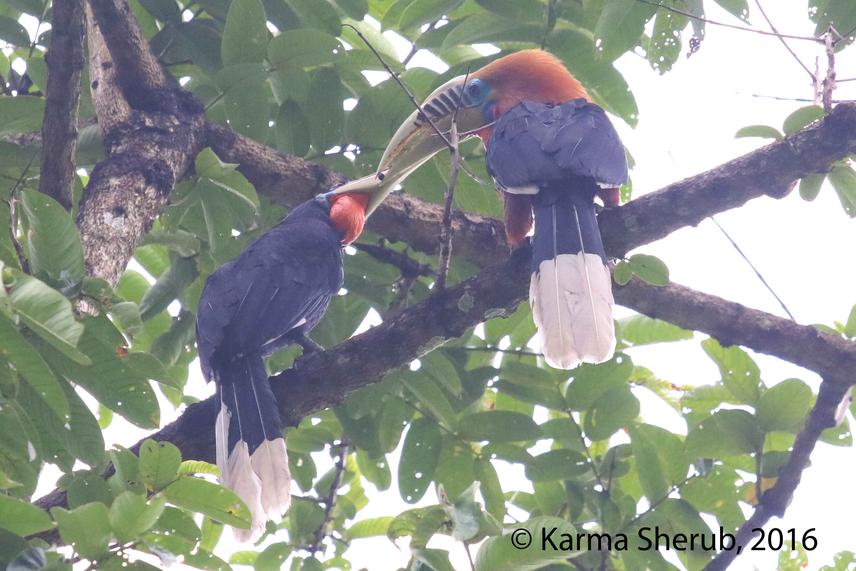Karma Sherub
The study aims to document the details on feeding habit, foraging behaviour and critical habitat use by Rufous-necked Hornbill to ensure the better understanding of this vulnerable species. It also target to identify various potential threats to the conservation approach.

Male (right) and female (left) Rufous-necked hornbill.
Rufous-necked hornbill (Aceros nipalensis) is classified as vulnerable by the IUCN and Birdlife International. Jigme Singye Wangchuck National Park covers an expanse of 1,723 sq. km is one of the important habitats of Rufous-necked Hornbill.
For Hornbill ecology and life history, studies determining the diet and food availability are needed (Leighton, 1982). However, no study has been carried out for determining the food resources and foraging behaviour, habitat use and identification of threats to the species in JSWNP. Studies on seasonal use of the various food resources and habitats are critical in light of the diminishing habitats and this project aims to fill this research gap.
Transect line covering 40% of total area between 300m-2000 masl in the Park will be randomly laid with respect to changing seasons. Focal observations (Altmann, 1974) will made in each transect line for food and foraging behaviour and instantaneous sampling (Altmann, 1974; O’Donnell and Dilks, 1988) for habitat use. Disturbances/threats will be assessed within 10 m radius circular plot of spotted area. Probable distribution maps for Rufous-necked Hornbill in JSWNP from this project will be a major contribution to future researcher in this area.